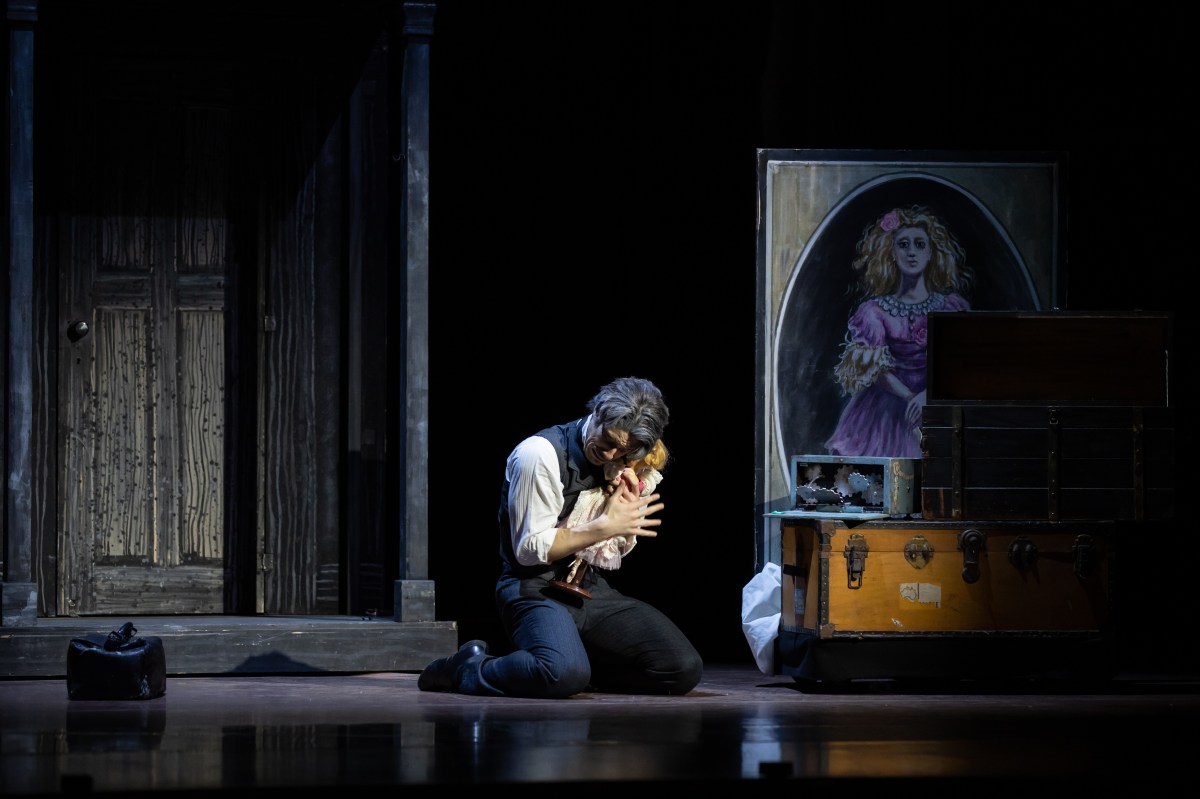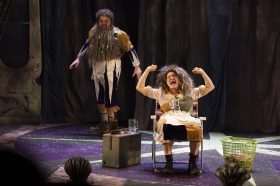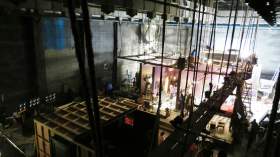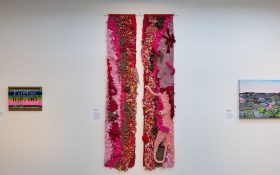Coppélia has been a beloved ballet in traditional dance company repertoire since it was first produced in the 1870s, when the original choreography of Arthur Saint-Léon was set to Léo Delibes’ enchanting music. The story of the mad inventor, Dr Coppélius, and his creation of a mechanical doll that he tries to bring to life, was based on two short stories from the pen of a 19th century German gothic horror writer. This genre was highly popular at the time with Coppélia displaying many overtones of Mary Shelley’s famous fictional character, Frankenstein.
While there are dramatic moments in the ballet, Coppélia is overwhelmingly a light-hearted comic work about the joys of life in a small village community. Originally set in Austrian Galicia, a number of recent productions have adapted the work to the modern era, interpreting the mechanical doll as being a robot or even AI-generated.
Meanwhile, Assistant Artistic Director of Queensland Ballet (QB), Greg Horsman, who choreographed this new production back in 2014, decided to make it more relevant by relocating it to an Australian small town in the late 19th century. In this version, Coppélius becomes a medical doctor migrating from Hamburg with his young daughter to start a new life in Hahndorf in South Australia, where German settlers came to start the wine industry. The informative Prologue is told over the overture, with period sepia film projections of the harrowing journey to Australia and the young girl’s death aboard the ship.
In the opening first act, the grief-stricken Coppélius arrives alone and, to the dismay of the townsfolk, eschews company. He starts to build a life-size mechanical doll to replace his daughter and here the original and revisioned stories begin to merge. We soon learn that the young lovers, Franz and Swanilda, quarrel as Franz becomes infatuated with the doll he believes to be real, leading to Swanilda’s subsequent jealousy and her determination to find out what is happening in the strange Coppélius house.
This clever and highly plausible reworking of the story is assisted by a wonderfully evocative setting from designer, Hugh Colman, whose small-town street scene offers wooden verandas with a windmill and water tanks on the skyline. Matched by the distant yellow and brown landscape, the sense of heat drains the sky of colour.
Act Three offers a similar design with white church, small bell tower and scudding clouds, while the Act Two interior of the doctor’s house with its myriad pieces of mechanical equipment and moving body parts is great fun. Jon Buswell’s lighting is suitably atmospheric, while the subtle colour changes to the sky in Acts One and Three, the hot midday sun giving way to afternoon gold and evening blue, are very well realised.
Noelene Hill’s costumes are delightful. Meticulously researched in terms of the period with a distinct Australian flavour, they deliver a wide colour palette for the townsfolk, including rustic hues of brown and orange with glorious pastel shades for the younger female characters. The third act provides finer clothes for the wedding scene and festivities, while Swanilda and Franz stand out in shades of blue throughout. Differences in social status denote crimson-clad local dignitaries, the well-heeled Pastor and wife as well as the tartan and kilts of the Scottish family. The Hahndorf football team costumes are also great fun.
Horsman’s choreography is in many respects fairly faithful to that of Arthur Saint-Léon with its mazurkas and waltzes, though there are changes to traditional folk and European dances in keeping with Australian influences. The scene emulating a football match is particularly enjoyable, with its choreographed interpretation of a game beautifully presented. Additionally, the range of mechanical dolls and bodies are quite wonderfully brought to life in dance and movement.
For the most part the quality of dancing is first rate, as are the individual characterisations, thoughtfully interpreted and intelligently delivered.
Chiara Gonzalez is a splendid Swanilda, giving a vivacious and engaging performance throughout. By turns her character is both happy, angry, fearful, brave and very smart. The embodiment of feminine wiles and strength, she is in charge of her own destiny from the outset. Gonzalez’s dancing is excellent, technically assured on pointe and quite exquisite to watch. She demonstrates astonishing technical virtuosity and is exceptionally good at parodying the mechanical doll.
Patricio Revé, as Franz, is her match. A dramatically strong and powerful dancer, he pursues Swanilda with dedication and is equally believable in many humorous moments. His technical skills come into their own in Act Three with some exceptional jumps and leaps. Very fine artistry indeed. Together, Revé and Gozalez demonstrate marvellous onstage chemistry, making their final pas de deux both heartfelt and believable.
As Coppélius, Vito Bernasconi gives a restrained performance, thankfully not making him a caricature, which is too often the case. He seems too young to be playing this role though and does not imbue the doctor with much depth of character, though for most of the ballet he is admittedly an unhappy and solitary soul. The reworking of the plot perhaps makes it difficult to reconcile the original mad scientist with a grieving father. His supposed change of character in Act Three appears to be glossed over in this production.
Swanilda’s fearless and lively friend, Mary, is energetically danced by Laura Tosar. As her love interest Henry, Alexander Idaszak is first-rate. Collectively, they give a fine and humorous rendition of their playful duet that was very well received. Isabella Swietlicki makes a good impression as the fearful younger friend, Liesl, as do the remaining girlfriends. Georgia Swan is tasked with delivering the Prayer, which technically appears to require some fine-tuning.
Read: Dance review: Arkadia, RISING Festival, The Substation
The corps de ballet work hard and it is lovely to see the excellent work of the male dancers as Franz’s friends, particularly as the football team. Equally, the female ensemble is terrific, helping to create marvellous stage pictures in the choreographed finales of the Act Three festivities.
The Queensland Symphony Orchestra, under the baton of Music Director and Conductor, Nigel Gaynor, play this joyous score with great energy and attention to detail. In particular, fine solos from flute, clarinet, horn, violin and viola are delivered exceptionally well.
All in all, this is a well-crafted revival of an enchanting ballet – charming and great fun, with first-rate choreography and splendid dancing by Queensland Ballet.
Coppélia
Queensland Ballet
Choreographer: Greg Horsman (after Arthur Saint-Léon & Marius Petipa)
Music: Léo Delibes
Music Arranger and Conductor: Nigel Gaynor
Costume Designer: Noelene Hill
Set Designer: Hugh Colman
Lighting Designer: Jon Buswell
Music performed by: Queensland Symphony Orchestra
Principal cast on opening night : Vito Bernasconi, Chiara Gonzalez, Patricio Revé, Laura Tosar, Alexander Idaszak, Isabella Swietlicki, Georgia Swan
Queensland Ballet Company, Jette Parker Young Artists and Queensland Ballet Academy Students
Coppélia will be performed until 22 June 2024 at the Playhouse, QPAC, Brisbane





